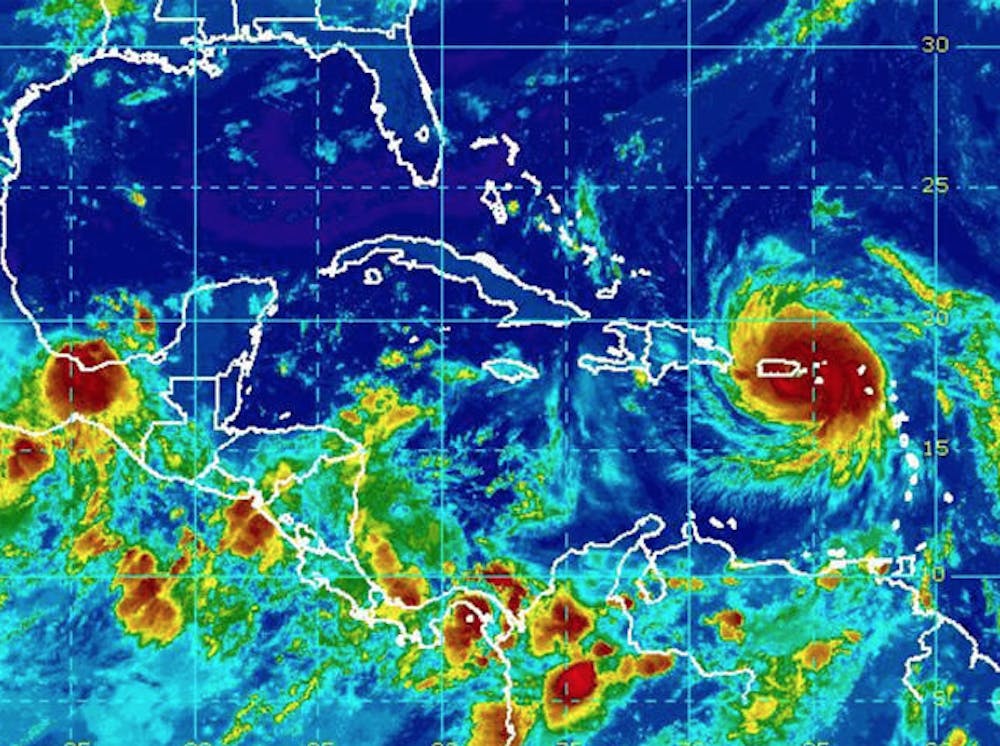Penn students and faculty have found a tangible way to contribute to on-the-ground relief for victims of Hurricane Maria in Puerto Rico without leaving campus.
Penn students and faculty participated in a five-hour "mapathon" on Oct. 11 to support residents of Puerto Rico devastated by Hurricane Maria.
During the mapathon, volunteers used satellite images from the website OpenStreetMap to locate landmarks on a map. Users across the world work on the map, and OpenStreetMap will verify the information once multiple volunteers have outlined the same locations. Mapathon coordinators displayed satellite images of the most devastated regions on a large screen so that volunteers could focus their efforts on those towns.
Penn librarian Amanpreet Kaur reached out to fellow librarians Girmay Misgna and Coral Salomón about organizing the event after reading about a similar mapathon organized by librarians at Columbia University.
“What’s made the situation [in Puerto Rico] worse has been the lack of urgency,” Salomón said. “As soon as we heard that we could do something, we didn’t want to waste any time.”
The mapathon comes as the latest effort among Penn affiliates to assist the victims in Puerto Rico. The group "Students with Puerto Rico" helped to organize a GoFundMe page that has raised over $200,000, including a $20,000 donation from "The Tonight Show" host Jimmy Fallon. The mapathon is an attempt to provide logistical, rather than financial, help.
Relief organizations working in Puerto Rico struggle to help those trapped in rural areas in the interior of the island, since there is little data on roadways and buildings. Small towns may also not be labeled on maps, so in some cases, aid workers may not even know which towns exist.
For postdoctoral medical student Amaliris Gonzalez, her own family members were trapped in the very streets she was mapping.
RELATED:
Penn administrators express 'deepest sympathies' to anyone affected by Hurricane Irma
Students are raising tens of thousands in donations for disaster relief in Mexico and Puerto Rico
Comedian Jimmy Fallon donated $20,000 to Penn students raising funds for Puerto Rico
These Penn students smashed a car to raise funds for women's heart heath and hurricane relief
“Most of my family is in [that] area, so I have no idea how they are, and this is my way to help,” Gonzalez said, adding that she was not able to contact any of her relatives until weeks after the hurricane.
Misgna, a mapping specialist, was on hand to teach volunteers how to use OpenStreetMap as they arrived at the event.
“You don’t need to have any background or anything,” Misgna explained. “The training takes 20 to 30 minutes.”
College freshman Suzan Kim also helped train volunteers who dropped in at the event, but pointed out that users can also contribute from the comfort of their dorms.
“You just have to create an account on OpenStreetMap, and at that point you can log onto your account at anytime, from anywhere, as long as you have Wi-Fi, and continue to add onto the mapping information, ” Kim said.
Student volunteers have focused on the areas that the Red Cross has prioritized, such as the region between the cities of Sabana Grande and Adjuntas.
“A lot of the aid has been concentrated in the northeast area of Puerto Rico, so we also really want to help these organizations get to the interior of the island,” Salomon said.
For Salomón, the disaster also hits close to home. Salomón was born in Mayagüez, Puerto Rico, and all of her family still lives there.
“I still don’t have consistent communication with my family members,” Salomón said. “It’s just hard to know what's going on, and why has there been such a breakdown in the relief effort.”
RELATED:
Penn administrators express 'deepest sympathies' to anyone affected by Hurricane Irma
Students are raising tens of thousands in donations for disaster relief in Mexico and Puerto Rico
Comedian Jimmy Fallon donated $20,000 to Penn students raising funds for Puerto Rico
These Penn students smashed a car to raise funds for women's heart heath and hurricane relief



